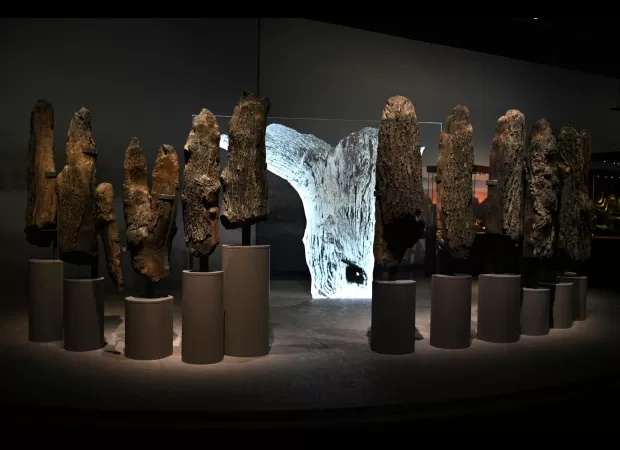Ancient Britons had a gruesome way to speed up the arrival of summer.
"Attempting is not advised."

Have you ever heard of Seahenge? It's a fascinating discovery that was once hidden along the Norfolk coast. It consisted of two timber circles from the Stone Age, which were playfully nicknamed "Seahenge" in reference to the well-known Stonehenge. One of the circles, Holme I, had a unique feature - an upturned oak tree reaching towards the sky in the center. Surrounding it were 55 oak posts, creating a tight-knit circle. The other circle, Holme II, had two oak logs resting flat in the center. These structures were preserved for thousands of years, thanks to the surrounding sand dunes and mud flats. However, in 1998, rising tides exposed the remains of these mysterious circles. And although they were uncovered, their purpose remained a mystery.
Ever since the discovery, archaeologists have been speculating about the purpose of these structures. Some believe they were used to mark the death of an important individual, while others think they may have been used for "sky burials", where the deceased were left in the center to be carried away by birds. However, a recent paper proposes a new and intriguing theory - the circles were built in response to climate change. But not the kind we are familiar with today, where temperatures and sea levels are rising. Rather, it was a time when the world was much colder, causing longer winters and affecting crops.
Dr. David Nance, a researcher at the University of Aberdeen, suggests that these circles were created as a response to the extreme climate conditions. The locals may have performed rituals to try and prolong the summer and bring back the warm weather. According to Dr. Nance, the timbers used to build Seahenge were cut in the spring and were most likely aligned with the sunrise on the summer solstice. This suggests that the summer solstice held great significance for the people of that time. In fact, folklore says that the summer solstice was the day when the cuckoo, a symbol of fertility, stopped singing and flew back to the Otherworld, taking summer with it. Interestingly, we now know that cuckoos migrate to tropical Africa over the winter.
Dr. Nance also points out that the structures of Holme I resemble two supposed winter dwellings of the cuckoo described in folklore - a hollow tree or "the bowers of the Otherworld", symbolized by the upturned oak tree in the center. He suggests that the locals were trying to trick the cuckoo into staying and bringing warm weather with it. This is supported by the "myth of the pent cuckoo" where an unfledged cuckoo was placed in a thorn bush and "walled-in" to extend the summer, but it always flew away.
However, the purpose of Holme II may not have been as innocent. Dr. Nance relates it to the legend of "sacred kings" who were sacrificed if the community faced misfortune, such as a bad harvest or a long winter. These sacrifices were made to the goddess of Venus, in hopes of restoring harmony. Dr. Nance suggests that these sacrifices were made every eight years, coinciding with the eight-year cycle of Venus. The fixtures in Holme II, which were thought to hold a coffin, were oriented towards the sunrise on Samhain - now known as Halloween - in 2049 when Venus was still visible. This leads Dr. Nance to believe that both monuments had different functions and rituals, but with a common goal - to end the harsh winters.
If you're hoping to catch a glimpse of these ancient structures, you may be out of luck. Holme I was excavated and is now on display at Lynn Museum in Norfolk. However, Holme II was left in place due to its location in a nature reserve and is no longer visible. Perhaps it's for the best, as we could all use some better luck on the weather front.






